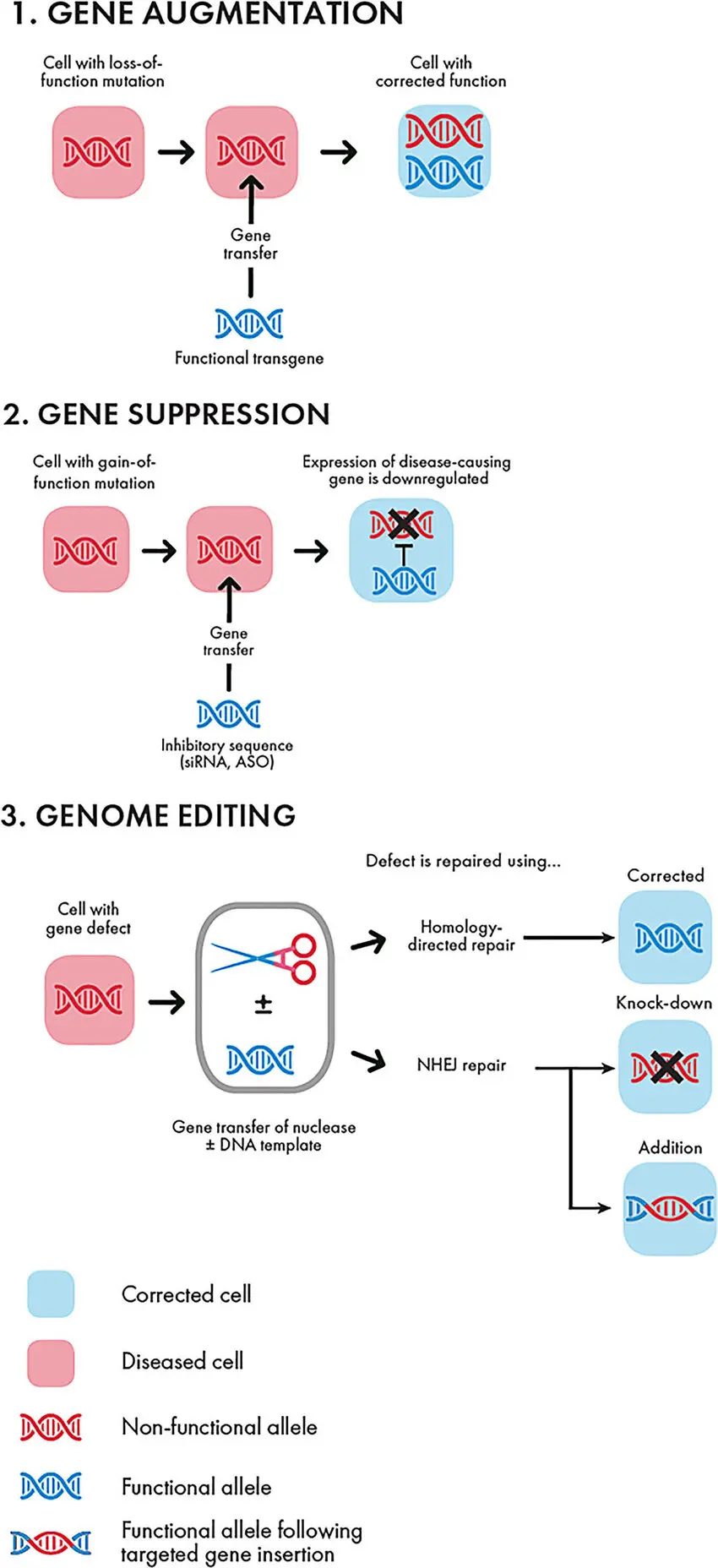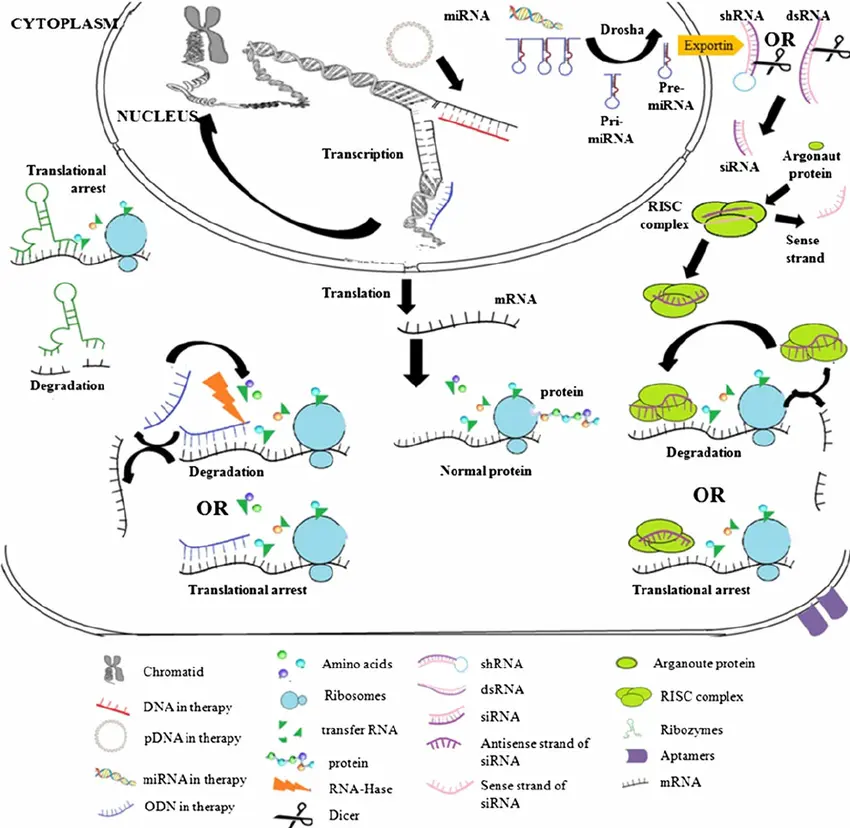Gene therapy represents one of the most transformative frontiers in modern medicine. By directly modifying the genetic material within cells, gene therapy offers the potential to correct inherited genetic errors, enhance immune responses, and treat conditions that were once considered incurable. With advances in molecular biology, delivery systems, and genome editing tools like CRISPR/Cas9, gene therapy is transitioning from experimental to clinical reality.
What Is Gene Therapy?
Gene therapy is a cutting edge biomedical technique that modifies or manipulates the genetic material within an individual's cells to achieve a therapeutic effect. This strategy aims to correct, replace, silence, or supplement genes that are dysfunctional or missing due to inherited or acquired mutations.
Unlike conventional treatments that primarily address symptoms with medications, gene therapy intervenes at the molecular root of the condition the genome itself. This makes it a powerful approach for addressing genetic disorders, chronic conditions, and even some forms of cancer and viral infections.
Types of Gene Therapy
Gene therapy encompasses a range of molecular techniques that modify genes to prevent or treat biological dysfunction at the source. The therapeutic strategy varies based on the type and cause of the genetic abnormality. Below are the four primary types of gene therapy approaches, each with unique applications, tools, and clinical value:
1. Gene Addition
Definition:
Gene addition involves introducing a functional copy of a gene into the patient’s cells to compensate for a non functional, mutated, or missing gene.
How it works:
The therapeutic gene is typically delivered using a viral vector such as Adeno-associated virus (AAV) or lentivirus. Once inside the target cells, the new gene does not replace the faulty gene, but instead supplements it by expressing a healthy version of the corresponding protein.
Applications:
- Inherited disorders like hemophilia A, β-thalassemia, or spinal muscular atrophy (SMA)
- Some cancers where gene function needs restoration
2. Gene Editing
Definition:
Gene editing uses precision molecular tools to directly correct mutations or modify DNA at specific locations within the genome.
How it works:
Technologies such as CRISPR/Cas9, TALENs, and Zinc Finger Nucleases (ZFNs) are used to:
- Cut the DNA at targeted sites
- Remove or replace faulty sequences
- Insert new base pairs via homology-directed repair (HDR) or non-homologous end joining (NHEJ)
Applications:
- Monogenic disorders (Duchenne muscular dystrophy)
- Oncology (engineering immune cells like CAR-T cells)
- Ex vivo editing of hematopoietic stem cells
3. Gene Silencing
Definition:
Gene silencing refers to techniques that reduce or completely suppress the expression of specific genes, particularly those that are overactive or producing harmful proteins.
How it works:
One of the most widely used methods is RNA interference (RNAi), including:
- siRNA (small interfering RNA)
- shRNA (short hairpin RNA)
- Antisense oligonucleotides (ASOs)
These RNA molecules bind to complementary messenger RNA (mRNA) transcripts, leading to their degradation or preventing their translation into proteins.
Applications:
- Conditions caused by dominant gain of function mutations
- Neurodegenerative conditions
4. Gene Regulation
Definition:
Gene regulation strategies aim to modulate the level, timing, or location of gene expression without altering the DNA sequence itself.
How it works:
This involves using regulatory elements (promoters, enhancers, repressors) or epigenetic modifiers to fine tune gene expression. Techniques include:
- Synthetic biology circuits
- Transcriptional repressors/activators
- Epigenetic reprogramming (methylation or acetylation control)
Applications:
- Fine control over therapeutic gene dosage
- Safety switches in engineered cell therapies
- Research into gene-environment interactions
How Does Gene Therapy Work?
To carry out gene therapy, scientists must:
- Identify a target gene associated with the condition.
- Design a therapeutic sequence DNA, RNA, or protein based that can correct or compensate for the malfunction.
- Deliver the therapy to the affected cells using viral or non viral vectors.
Applications of Gene Therapy
Gene therapy is being developed and applied across a range of biological systems and medical areas:
Inherited Genetic Conditions:
- Cystic Fibrosis Correcting mutations in the CFTR gene.
- Duchenne Muscular Dystrophy Delivering micro dystrophin gene constructs.
- Hemophilia A and B Introducing genes that produce clotting factors VIII or IX.
Neurological & Neurodegenerative Targets:
- Spinal Muscular Atrophy (SMA) Zolgensma (AAV-based gene therapy) delivers a functional SMN1 gene.
- Parkinson’s Disease research Experimental therapies targeting dopamine related gene pathways.
Immunological and Cellular Therapies:
- CAR-T Cell Therapy Engineering T cells with chimeric antigen receptors to target cancers like leukemia and lymphoma.
- Autoimmune Modulation Investigating gene regulation tools to recalibrate overactive immune responses.
Ocular Gene Therapies:
- Leber Congenital Amaurosis (LCA2) Luxturna (AAV-based therapy) restores vision by correcting RPE65 mutations.

